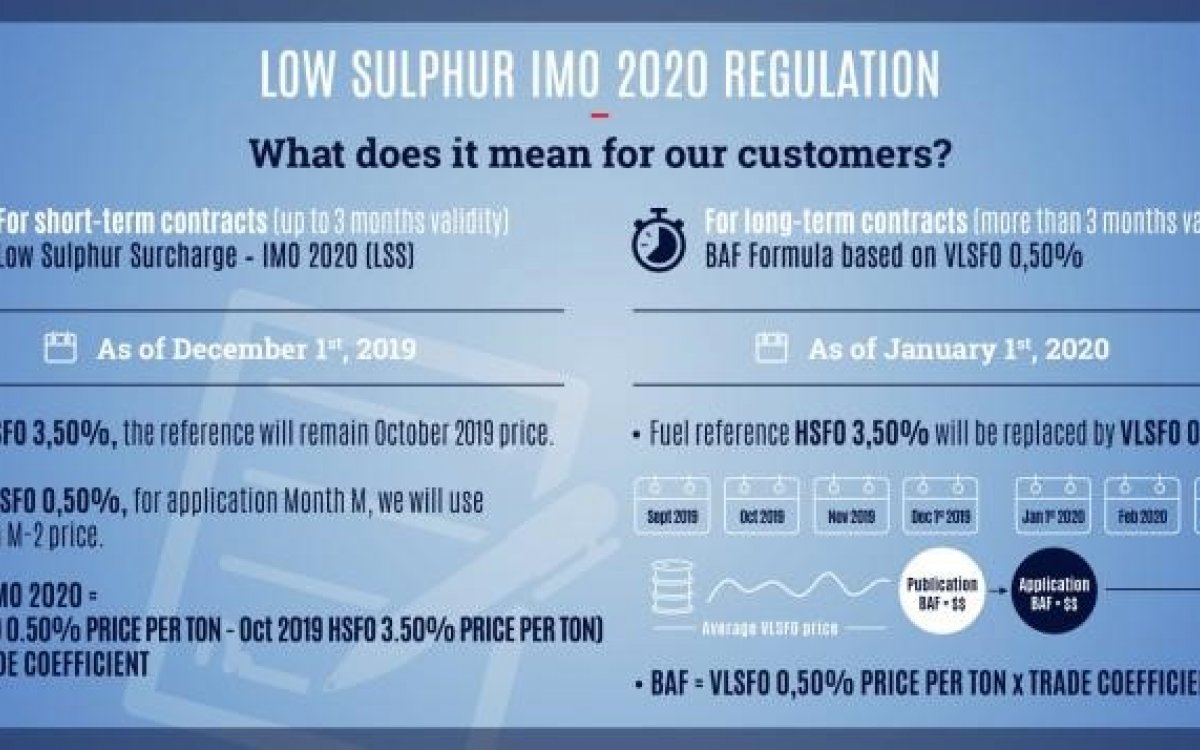The 2020 sulphur limit
For ships operating outside designated Emission Control Areas, IMO has set a limit for sulphur in fuel oil used on board ships of 0.50% m/m (mass by mass) from 1 January 2020. This will significantly reduce the amount of sulphur oxide emanating from ships and should have major health and environmental benefits for the world, particularly for populations living close to ports and coasts.
When did IMO adopt regulations to control air pollution form ships?
IMO has been working to reduce harmful impacts of shipping on the environment since the 1960s. Annex VI to the International Convention for the Prevention of Pollution from Ships (MARPOL Convention) was adopted in 1997, to address air pollution from shipping.
What are the limits on sulphur in the regulations?
Until 31 December 2019, for ships operating outside Emission Control Areas, the limit for sulphur content of ships’ fuel oil is 3.50% m/m (mass by mass).
The 0.50% m/m limit will apply on and after 1 January 2020.
Can this date be changed?
No. The date is set in the MARPOL treaty.
So can there be a delay in implementation?
No, legally, there can be no change in the 1 January 2020 implementation date, as it is too late now to amend the date and for any revised date to enter into force before 1 January 2020.
When was the date of 1 January 2020 decided?
The date of 1 January 2020 was set in the regulations adopted in 2008. However, a provision was adopted, requiring IMO to review the availability of low sulphur fuel oil for use by ships, to help Member States determine whether the new lower global limit on sulphur emissions from international shipping shall come into effect on 1 January 2020 or be deferred until 1 January 2025.
What will the new limit mean for ships?
Under the new sulphur limit, ships will have to use fuel oil on board with a sulphur content of no more than 0.50% m/m, against the current limit of 3.50%, which has been in effect since 1 January 2012.
How can ships meet lower sulphur emission standards?
Ships can meet the requirement by using low-sulphur compliant fuel oil.
What controls will there be once the new global limit takes effect?
Ships taking on fuel oil for use on board must obtain a bunker delivery note, which states the sulphur content of the fuel oil supplied. Samples may be taken for verification.
What sanctions will there be for not complying?
Sanctions are established by individual Parties to MARPOL, as flag and port States. IMO does not set fines of sanctions - it is down to the individual State Party.
What additional measures have been or are being developed to promote consistent implementation?
Implementation is the remit and responsibility of the Administrations (flag States and port/coastal States). Ensuring the consistent and effective implementation of the 2020 0.50% m/m sulphur limit is a high priority.
Source: IMO http://www.imo.org/en/mediacentre/hottopics/pages/sulphur-2020.aspx
